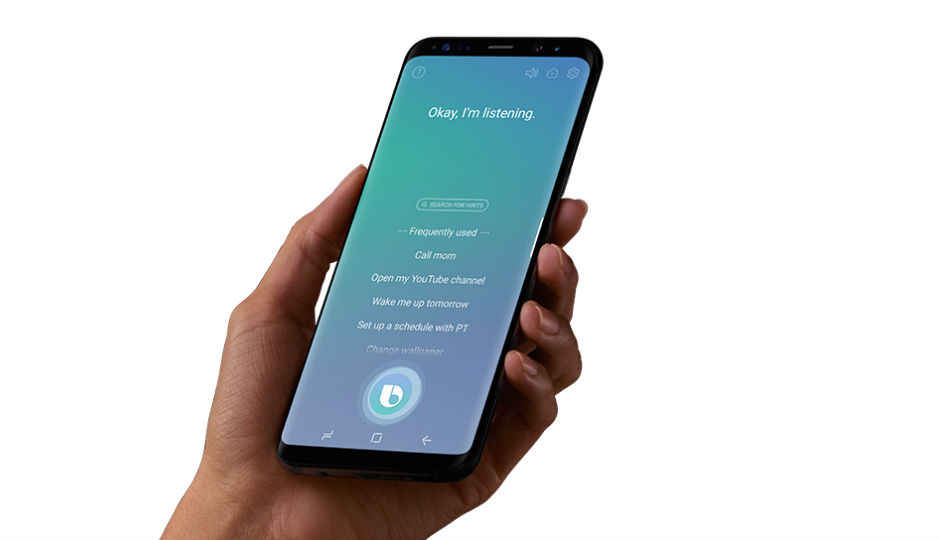 Highlights Bixby remapping coming to 8 and 9 series flagship Samsung phones Update will come through the app and not the OS Won't let you remap button to engage Google Assistant Samsung has been pushing hard for customers to use Bixby, to the point that they created a dedicated button on their flagship smartphones just for the AI. Since the button was introduced, users have complained about not being able to remap it to more useful functions like firing up the camera or even Google Assistant. With the Samsung Galaxy S10+, Samsung had announced that they would allow remapping of the Bixby button and now, the feature is also making its way to the 8 and 9 series of the Samsung Galaxy S and Note smartphones. The update that will allow the remapping of the Bixby button will come not through an OS update, but through an update to the Bixby app itself. The update can be found by going to the Galaxy Store app and searching for the update. Once updated, you will be able to remap the Bixby button to open any app on the phone, assignable using a single or double tap option. Sadly, you cannot reprogram is to bring up Google Assistant. You can find the settings by simply heading to Settings > Advanced Features > Bixby key. For the longest time, third-party developers and Samsung have played a cat and mouse game. Developers would release apps that would allow remapping of the Bixby button and then Samsung would shut their work around down. However, BxRemapper has been a popular app that Samsung users have been using to do more with their Bixby buttons, but now, they may no longer need that. Related Reads: Samsung Galaxy S10, Galaxy S10+, Galaxy S10e Pre-bookings now open in India: Price, offers, availability and all you need to know
Highlights Bixby remapping coming to 8 and 9 series flagship Samsung phones Update will come through the app and not the OS Won't let you remap button to engage Google Assistant Samsung has been pushing hard for customers to use Bixby, to the point that they created a dedicated button on their flagship smartphones just for the AI. Since the button was introduced, users have complained about not being able to remap it to more useful functions like firing up the camera or even Google Assistant. With the Samsung Galaxy S10+, Samsung had announced that they would allow remapping of the Bixby button and now, the feature is also making its way to the 8 and 9 series of the Samsung Galaxy S and Note smartphones. The update that will allow the remapping of the Bixby button will come not through an OS update, but through an update to the Bixby app itself. The update can be found by going to the Galaxy Store app and searching for the update. Once updated, you will be able to remap the Bixby button to open any app on the phone, assignable using a single or double tap option. Sadly, you cannot reprogram is to bring up Google Assistant. You can find the settings by simply heading to Settings > Advanced Features > Bixby key. For the longest time, third-party developers and Samsung have played a cat and mouse game. Developers would release apps that would allow remapping of the Bixby button and then Samsung would shut their work around down. However, BxRemapper has been a popular app that Samsung users have been using to do more with their Bixby buttons, but now, they may no longer need that. Related Reads: Samsung Galaxy S10, Galaxy S10+, Galaxy S10e Pre-bookings now open in India: Price, offers, availability and all you need to knowfrom Latest Technology News https://ift.tt/2IIfeJz
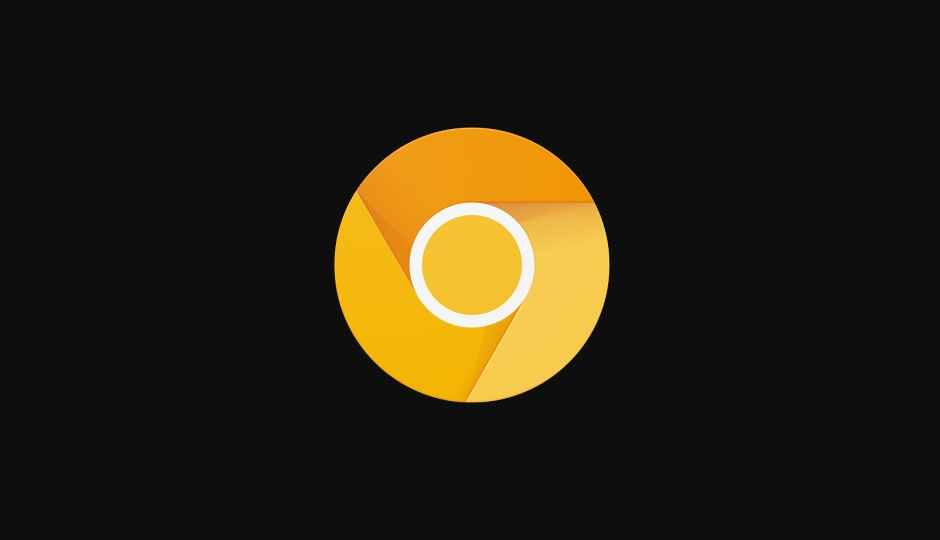 Highlights: The Canary build of Chrome browser gets a dark mode on Android The dark mode renders the content within the browser windows dark A system-wide dark mode could be introduced in the next version of Android Chrome will soon join the long list of applications that support dark mode by default. Two months ago, we’d reported that Google had been working to bring native dark mode support to its popular browser on Windows 10. A fresh update from 9to5Google tells us that dark mode has now been included in the latest build (ver. 74.0) of Chrome Canary for Android and that one need only toggle a Chrome flag to see it in action. Unlike previous demos of dark mode on Chrome Canary, the updated feature in the latest build renders only the content in the browser window dark and not the browser UI. To enable this dark mode in the latest build of Chrome Canary, you have to toggle a feature flag called “#enable-android-web-contents-dark-mode”. To do this, visit chrome://flags and search for “Dark Mode” using the search bar. Once you’ve found it, click on the dropdown button below the flag and change it from Default to Enabled. Chrome will then prompt you to relaunch the application so the changes can take effect. Hit Relaunch and expect to see no change to the homepage however. Curious to see how far Google had come with the new feature under test, we fired up our resident Google Pixel 2 XL and opened Chrome Canary. With the new dark mode enabled, we saw the Google search results page appearing well-rendered. When we opened a news article from our website, the background went from being full black to dark grey. Sadly, some elements within the page flashed white as we scrolled up and down. Naturally, we don’t expect the rendering to be perfect at this point but we do expect it to get better by the time the feature rolls out to the stable version of the browser. You’ll notice that enabling this dark mode only renders the content of pages dark and not the UI of the browser itself, which is what a dark mode in most applications does. In fact, Google has even named the flag “...web-contents-dark-mode” so users don’t get the wrong idea. That said, Google is expected to roll out a system-wide dark mode feature in the next version of Android, which should decide the colour scheme of the browser’s UI as well. We expect this dark mode for content on pages to roll out to the stable version of Chrome in the coming weeks. Related Read: Google working to bring native dark mode on Windows 10
Highlights: The Canary build of Chrome browser gets a dark mode on Android The dark mode renders the content within the browser windows dark A system-wide dark mode could be introduced in the next version of Android Chrome will soon join the long list of applications that support dark mode by default. Two months ago, we’d reported that Google had been working to bring native dark mode support to its popular browser on Windows 10. A fresh update from 9to5Google tells us that dark mode has now been included in the latest build (ver. 74.0) of Chrome Canary for Android and that one need only toggle a Chrome flag to see it in action. Unlike previous demos of dark mode on Chrome Canary, the updated feature in the latest build renders only the content in the browser window dark and not the browser UI. To enable this dark mode in the latest build of Chrome Canary, you have to toggle a feature flag called “#enable-android-web-contents-dark-mode”. To do this, visit chrome://flags and search for “Dark Mode” using the search bar. Once you’ve found it, click on the dropdown button below the flag and change it from Default to Enabled. Chrome will then prompt you to relaunch the application so the changes can take effect. Hit Relaunch and expect to see no change to the homepage however. Curious to see how far Google had come with the new feature under test, we fired up our resident Google Pixel 2 XL and opened Chrome Canary. With the new dark mode enabled, we saw the Google search results page appearing well-rendered. When we opened a news article from our website, the background went from being full black to dark grey. Sadly, some elements within the page flashed white as we scrolled up and down. Naturally, we don’t expect the rendering to be perfect at this point but we do expect it to get better by the time the feature rolls out to the stable version of the browser. You’ll notice that enabling this dark mode only renders the content of pages dark and not the UI of the browser itself, which is what a dark mode in most applications does. In fact, Google has even named the flag “...web-contents-dark-mode” so users don’t get the wrong idea. That said, Google is expected to roll out a system-wide dark mode feature in the next version of Android, which should decide the colour scheme of the browser’s UI as well. We expect this dark mode for content on pages to roll out to the stable version of Chrome in the coming weeks. Related Read: Google working to bring native dark mode on Windows 10 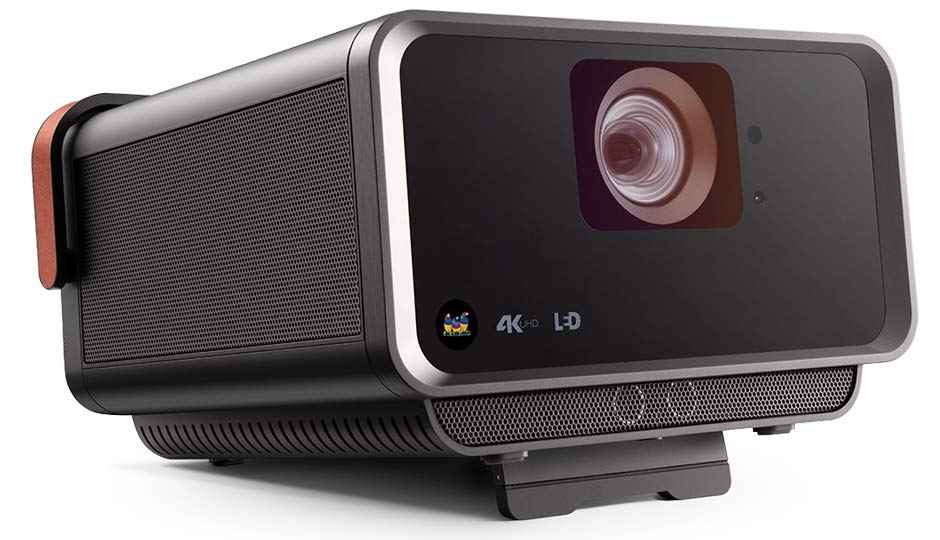 Viewsonic has launched three new projectors in India catering to different types of use cases and customers. The X10-4K LED portable projector was launched at ‘What Hi-Fi Show’ at St. Regis Hotel Lower Parel, Mumbai. The portable projector comes with Amazon Alexa and Google Voice assistants. The X10-4K is an LED-based projector with integrated Harmon Kardon speakers, and built-in smart technologies specifically build to cater as the home entertainment solution. Alongside they also launched the ViewSonic M1+ LED which is an LED-based portable projector specifically built for a budget conscious market and finally a professional phosphor-based projector i.e LS800 HD which is Full HD projector built for professional setups in large venues. X10-4K The Viewsonic X10-4K comes with 4K resolution with smart streaming functionality and portable design. It's lightweight design, easy carry handle, and short throw lens makes it a portable projector perfect for those who want a theatre-like experience at the comfort of their couch. Furthermore, the projector features 2,400 LED lumens of brightness, 125% of Rec.709 colour accuracy and Frame Interpolation technology which the company claims reduce motion blur and ensures fluid multimedia content projection and HDR support. Connectivity options include Wi-Fi connectivity to stream content, HDMI 2.0/HDCP 2.2, USB 2.0 Type-A, Type-C, Audio In/Out, and RJ45. M1+ LED ViewSonic M1+ LED is an ultra-portable projector that provides entertainment and content delivery on a budget. It comes with a built-in battery that provides up to six hours of battery life and Viewsonic claims the projector utilizes the latest solid-state LED technology, making the projector mercury and lamp free and offers up to 30,000 hours of usage. The projector itself weighs less than 2 pounds and offers 300 ANSI lumens of brightness and a 120,000:1 contrast ratio and dual Harman Kardon speakers on-board. M1+ offers connectivity options like Bluetooth wireless connectivity, HDMI, USB 2.0 and USB Type C, Audio Out and a MicroSD card reader. LS800 HD On the other hand, LS800 HD is phosphor based projector designed for a professional setup like education and business application in large venues like lecture halls and large boardrooms and auditoriums. It is a Full HD projector which features a brightness of 5,000 ANSI Lumens, a 100,000:1 contrast ratio and a company claimed 30,000 hours of light source life. Viewsonic says, “Full HD 1080p resolution combined with ViewSonic’s SuperColor™ technology, the LS800HD laser projector deliver advanced colour reproduction, bringing to life captivating colour, crisp graphics, and stunning images.” The X10-4K comes with a price tag of INR 350K while the budget-friendly M1+ LED and LS800 HD are priced at INR 60K and INR 365K respectively.
Viewsonic has launched three new projectors in India catering to different types of use cases and customers. The X10-4K LED portable projector was launched at ‘What Hi-Fi Show’ at St. Regis Hotel Lower Parel, Mumbai. The portable projector comes with Amazon Alexa and Google Voice assistants. The X10-4K is an LED-based projector with integrated Harmon Kardon speakers, and built-in smart technologies specifically build to cater as the home entertainment solution. Alongside they also launched the ViewSonic M1+ LED which is an LED-based portable projector specifically built for a budget conscious market and finally a professional phosphor-based projector i.e LS800 HD which is Full HD projector built for professional setups in large venues. X10-4K The Viewsonic X10-4K comes with 4K resolution with smart streaming functionality and portable design. It's lightweight design, easy carry handle, and short throw lens makes it a portable projector perfect for those who want a theatre-like experience at the comfort of their couch. Furthermore, the projector features 2,400 LED lumens of brightness, 125% of Rec.709 colour accuracy and Frame Interpolation technology which the company claims reduce motion blur and ensures fluid multimedia content projection and HDR support. Connectivity options include Wi-Fi connectivity to stream content, HDMI 2.0/HDCP 2.2, USB 2.0 Type-A, Type-C, Audio In/Out, and RJ45. M1+ LED ViewSonic M1+ LED is an ultra-portable projector that provides entertainment and content delivery on a budget. It comes with a built-in battery that provides up to six hours of battery life and Viewsonic claims the projector utilizes the latest solid-state LED technology, making the projector mercury and lamp free and offers up to 30,000 hours of usage. The projector itself weighs less than 2 pounds and offers 300 ANSI lumens of brightness and a 120,000:1 contrast ratio and dual Harman Kardon speakers on-board. M1+ offers connectivity options like Bluetooth wireless connectivity, HDMI, USB 2.0 and USB Type C, Audio Out and a MicroSD card reader. LS800 HD On the other hand, LS800 HD is phosphor based projector designed for a professional setup like education and business application in large venues like lecture halls and large boardrooms and auditoriums. It is a Full HD projector which features a brightness of 5,000 ANSI Lumens, a 100,000:1 contrast ratio and a company claimed 30,000 hours of light source life. Viewsonic says, “Full HD 1080p resolution combined with ViewSonic’s SuperColor™ technology, the LS800HD laser projector deliver advanced colour reproduction, bringing to life captivating colour, crisp graphics, and stunning images.” The X10-4K comes with a price tag of INR 350K while the budget-friendly M1+ LED and LS800 HD are priced at INR 60K and INR 365K respectively.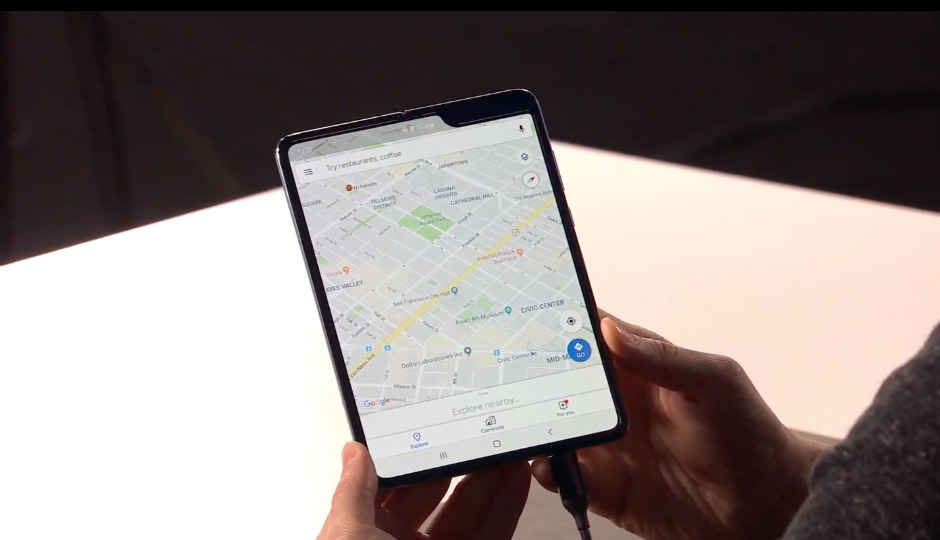 Highlights: Richard Yu, the CEO of Huawei’s Mobile business says that Samsung Galaxy Fold’s design is "not good." The company exec is said to have axed a project that was better than Samsung’s Galaxy Fold. The Mobile World Congress 2019 recently concluded but without a doubt, the most attractive devices at the show were foldable phones. Samsung, and Huawei showcased their foldable handsets and we already know that the two devices sport rather unique designs. While the Galaxy Fold features three-screens and opens up like a book, the Huawei Mate X features a single display that when fully stretched, resembles a tablet and wraps around the device’s body to resemble a phone. While the question, which design is better, might be subjective, Richard Yu, the CEO of Huawei’s Mobile business seems to killed a foldable phone project that is said to be same as the Galaxy Fold’s design as it was "not good." "I feel having two screens, a front screen and a back screen, makes the phone too heavy," Richard Yu told Business Insider while talking about the Galaxy Fold. As per the report, Yu said that the company was working on three foldable design projects simultaneously. One of the designs is said to resemble something that is touted to be “even better than” the Samsung Galaxy Fold but was axed by Yu as "It was bad." We can’t really say anything on which phone is better of the two, in terms of design, since both the companies decided to showcase their devices and not experience them. The Samsung Galaxy Fold and the Huawei Mate X were demoed by the company and didn’t allow anyone to touch or experience the phone. However, whichever design one likes, both the devices are priced steeply and are surely a niche for now. The Samsung Galaxy Fold goes on sale on April 26 and will cost $1980 (approx Rs 1,40,619), while the Huawei Mate X is priced at a whopping €2299 (Roughly Rs 1,85,285). LG also showcased its LG V50 ThinQ that, which is not a truly foldable phone but does come with a case that sports a second 6.2-inch OLED display. When attached to the device, it runs on the V50’s 4000mAh battery and can be used as a controller for games or just utilize the extra space for creating better PPTs or for similar use cases. Related Reads: All the foldable smartphones announced so far at MWC 2019
Highlights: Richard Yu, the CEO of Huawei’s Mobile business says that Samsung Galaxy Fold’s design is "not good." The company exec is said to have axed a project that was better than Samsung’s Galaxy Fold. The Mobile World Congress 2019 recently concluded but without a doubt, the most attractive devices at the show were foldable phones. Samsung, and Huawei showcased their foldable handsets and we already know that the two devices sport rather unique designs. While the Galaxy Fold features three-screens and opens up like a book, the Huawei Mate X features a single display that when fully stretched, resembles a tablet and wraps around the device’s body to resemble a phone. While the question, which design is better, might be subjective, Richard Yu, the CEO of Huawei’s Mobile business seems to killed a foldable phone project that is said to be same as the Galaxy Fold’s design as it was "not good." "I feel having two screens, a front screen and a back screen, makes the phone too heavy," Richard Yu told Business Insider while talking about the Galaxy Fold. As per the report, Yu said that the company was working on three foldable design projects simultaneously. One of the designs is said to resemble something that is touted to be “even better than” the Samsung Galaxy Fold but was axed by Yu as "It was bad." We can’t really say anything on which phone is better of the two, in terms of design, since both the companies decided to showcase their devices and not experience them. The Samsung Galaxy Fold and the Huawei Mate X were demoed by the company and didn’t allow anyone to touch or experience the phone. However, whichever design one likes, both the devices are priced steeply and are surely a niche for now. The Samsung Galaxy Fold goes on sale on April 26 and will cost $1980 (approx Rs 1,40,619), while the Huawei Mate X is priced at a whopping €2299 (Roughly Rs 1,85,285). LG also showcased its LG V50 ThinQ that, which is not a truly foldable phone but does come with a case that sports a second 6.2-inch OLED display. When attached to the device, it runs on the V50’s 4000mAh battery and can be used as a controller for games or just utilize the extra space for creating better PPTs or for similar use cases. Related Reads: All the foldable smartphones announced so far at MWC 2019 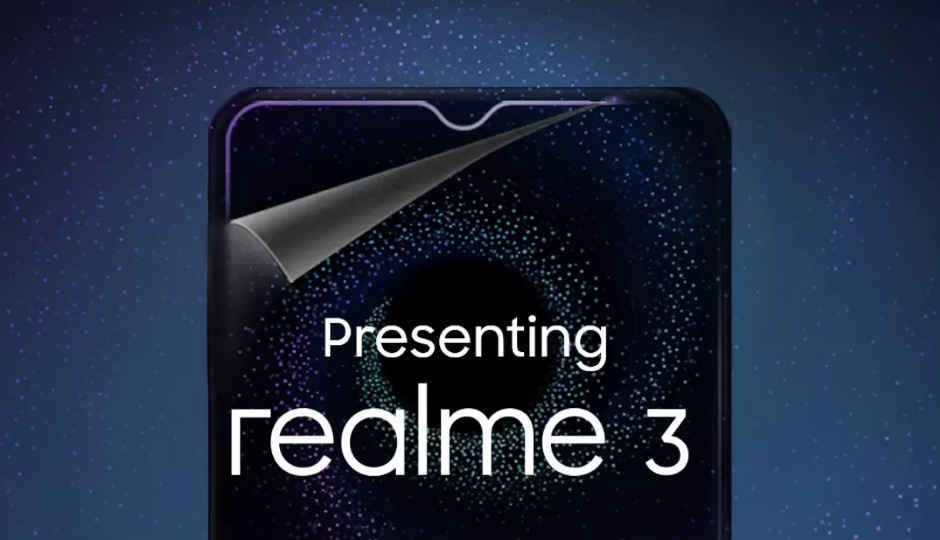 Highlights: Realme 3 will be powered by the Helio P70 SoC and 4230 mAh battery. These specs of the phone were revealed by Flipkart. The handset is slated to launch on March 4. Realme 3 will be launched on March 4 and the company and its CEO, Madhav Sheth, are leaving no stone unturned to create a hype for the upcoming device. While there are no more online platform exclusives, Flipkart has hosted a dedicated microsite for the upcoming phone, suggesting that it will be available via the online retailer. Additionally, the new webpage reveals some key specifications of the handset ahead of the official launch. Relme seems to have taken a jab at the recently launched Redmi Note 7 Pro and the Redmi Note 7 smartphones, as the Realme 3 is being promoted as being “#3StepsAhead” of the competition. The Flipkart webpage confirms that the Realme 3 will be powered by the MediaTek Helio P70 processor that is built on a 12 nm manufacturing process. The Helio P70 is being compared with a 14nm processor, which seems to be a dig at the 14nm Snapdragon 660 used on the Redmi Note 7. The teaser page also confirms the presence of a dewdrop notch display design on the Realme 3, along with a 4230 mAh battery. The latter is again compared with ‘Smaller batteries,’ which could be a reference to the 4,000mAh battery used on the Redmi Note 7 series. It is also reiterated that the Realme 3 smartphone will be launched at 12:30 PM on March 4. That’s all the official information Realme has revealed about the upcoming Realme 3 smartphone. However, Sheth recently teased that a pro variant of the phone could also be announced alongside the standard variant and going by the teased video, it could come with fast charging support. The phone is also confirmed to feature a dual-rear camera and a rear-mounted fingerprint sensor, along with a diamond-cut design for the rear panel. The competition in the mid-range smartphone segment is heating up. With Xiaomi introducing the Redmi Note 7 series that feature updated specs at a relatively lower price, it remains to be seen how the competing brands like Realme, Asus, and Honor adjust their strategies. Related Reads: Redmi Note 7 Pro with 48MP camera launched in India alongside Redmi Note 7: Price, Specs, and all you need to know
Highlights: Realme 3 will be powered by the Helio P70 SoC and 4230 mAh battery. These specs of the phone were revealed by Flipkart. The handset is slated to launch on March 4. Realme 3 will be launched on March 4 and the company and its CEO, Madhav Sheth, are leaving no stone unturned to create a hype for the upcoming device. While there are no more online platform exclusives, Flipkart has hosted a dedicated microsite for the upcoming phone, suggesting that it will be available via the online retailer. Additionally, the new webpage reveals some key specifications of the handset ahead of the official launch. Relme seems to have taken a jab at the recently launched Redmi Note 7 Pro and the Redmi Note 7 smartphones, as the Realme 3 is being promoted as being “#3StepsAhead” of the competition. The Flipkart webpage confirms that the Realme 3 will be powered by the MediaTek Helio P70 processor that is built on a 12 nm manufacturing process. The Helio P70 is being compared with a 14nm processor, which seems to be a dig at the 14nm Snapdragon 660 used on the Redmi Note 7. The teaser page also confirms the presence of a dewdrop notch display design on the Realme 3, along with a 4230 mAh battery. The latter is again compared with ‘Smaller batteries,’ which could be a reference to the 4,000mAh battery used on the Redmi Note 7 series. It is also reiterated that the Realme 3 smartphone will be launched at 12:30 PM on March 4. That’s all the official information Realme has revealed about the upcoming Realme 3 smartphone. However, Sheth recently teased that a pro variant of the phone could also be announced alongside the standard variant and going by the teased video, it could come with fast charging support. The phone is also confirmed to feature a dual-rear camera and a rear-mounted fingerprint sensor, along with a diamond-cut design for the rear panel. The competition in the mid-range smartphone segment is heating up. With Xiaomi introducing the Redmi Note 7 series that feature updated specs at a relatively lower price, it remains to be seen how the competing brands like Realme, Asus, and Honor adjust their strategies. Related Reads: Redmi Note 7 Pro with 48MP camera launched in India alongside Redmi Note 7: Price, Specs, and all you need to know  Highlights: NASA mimics mixtures found in the primordial Earth ocean It introduces the mixtures in a mini-ocean created within its lab The study is aimed at understanding the formation of life better It’s one thing to perform historical reenactments for education and entertainment but another thing entirely to recreate the birth of life under the ocean from four billion years ago to understand the formation of life better on other planets. But that’s exactly what NASA has gone and done at its Jet Propulsion Laboratory in Pasadena, California. The experiment was conducted by astrobiologist Laurie Barge and her team by creating miniature seafloors inside the lab—“mini-oceans”, in other words. The mini-oceans, filled with mixtures that mimic the Earth’s primordial ocean, allowed the scientists at NASA to recreate hydrothermal vents and the same alkaline nature the Earth’s ocean once had. According to NASA’s news release on the matter, the scientists created mini-oceans within the lab that acted as a nursery for the basic building blocks of life like amino acids and organic compounds, thus building proteins. “Understanding how far you can go with just organics and minerals before you have an actual cell is really important for understanding what types of environments life could emerge from,” commented Barge, the lead author on the study, which was later published in the Proceedings of the National Academy of Sciences journal. “Also, investigating how things like the atmosphere, the ocean and the minerals in the vents all impact this can help you understand how likely this is to have occurred on another planet.” The scientists at NASA believe that if the conditions simulated by them are found on other planets, there’s a higher chance of life being present there. To create the simulation, the scientists tested their mini-oceans in the same temperature found near a hydrothermal vent (around 70 degrees Celsius) without any oxygen in the mixture (because Earth had very little oxygen in the ocean back then). When future Mars missions return samples of the planet’s surface, they could reveal evidence of amino acids formed in the manner simulated. The same could happen when we get our hands on samples of other planets later in the future. Related Read: NASA spacecraft reaches asteroid Bennu, breaks record
Highlights: NASA mimics mixtures found in the primordial Earth ocean It introduces the mixtures in a mini-ocean created within its lab The study is aimed at understanding the formation of life better It’s one thing to perform historical reenactments for education and entertainment but another thing entirely to recreate the birth of life under the ocean from four billion years ago to understand the formation of life better on other planets. But that’s exactly what NASA has gone and done at its Jet Propulsion Laboratory in Pasadena, California. The experiment was conducted by astrobiologist Laurie Barge and her team by creating miniature seafloors inside the lab—“mini-oceans”, in other words. The mini-oceans, filled with mixtures that mimic the Earth’s primordial ocean, allowed the scientists at NASA to recreate hydrothermal vents and the same alkaline nature the Earth’s ocean once had. According to NASA’s news release on the matter, the scientists created mini-oceans within the lab that acted as a nursery for the basic building blocks of life like amino acids and organic compounds, thus building proteins. “Understanding how far you can go with just organics and minerals before you have an actual cell is really important for understanding what types of environments life could emerge from,” commented Barge, the lead author on the study, which was later published in the Proceedings of the National Academy of Sciences journal. “Also, investigating how things like the atmosphere, the ocean and the minerals in the vents all impact this can help you understand how likely this is to have occurred on another planet.” The scientists at NASA believe that if the conditions simulated by them are found on other planets, there’s a higher chance of life being present there. To create the simulation, the scientists tested their mini-oceans in the same temperature found near a hydrothermal vent (around 70 degrees Celsius) without any oxygen in the mixture (because Earth had very little oxygen in the ocean back then). When future Mars missions return samples of the planet’s surface, they could reveal evidence of amino acids formed in the manner simulated. The same could happen when we get our hands on samples of other planets later in the future. Related Read: NASA spacecraft reaches asteroid Bennu, breaks record